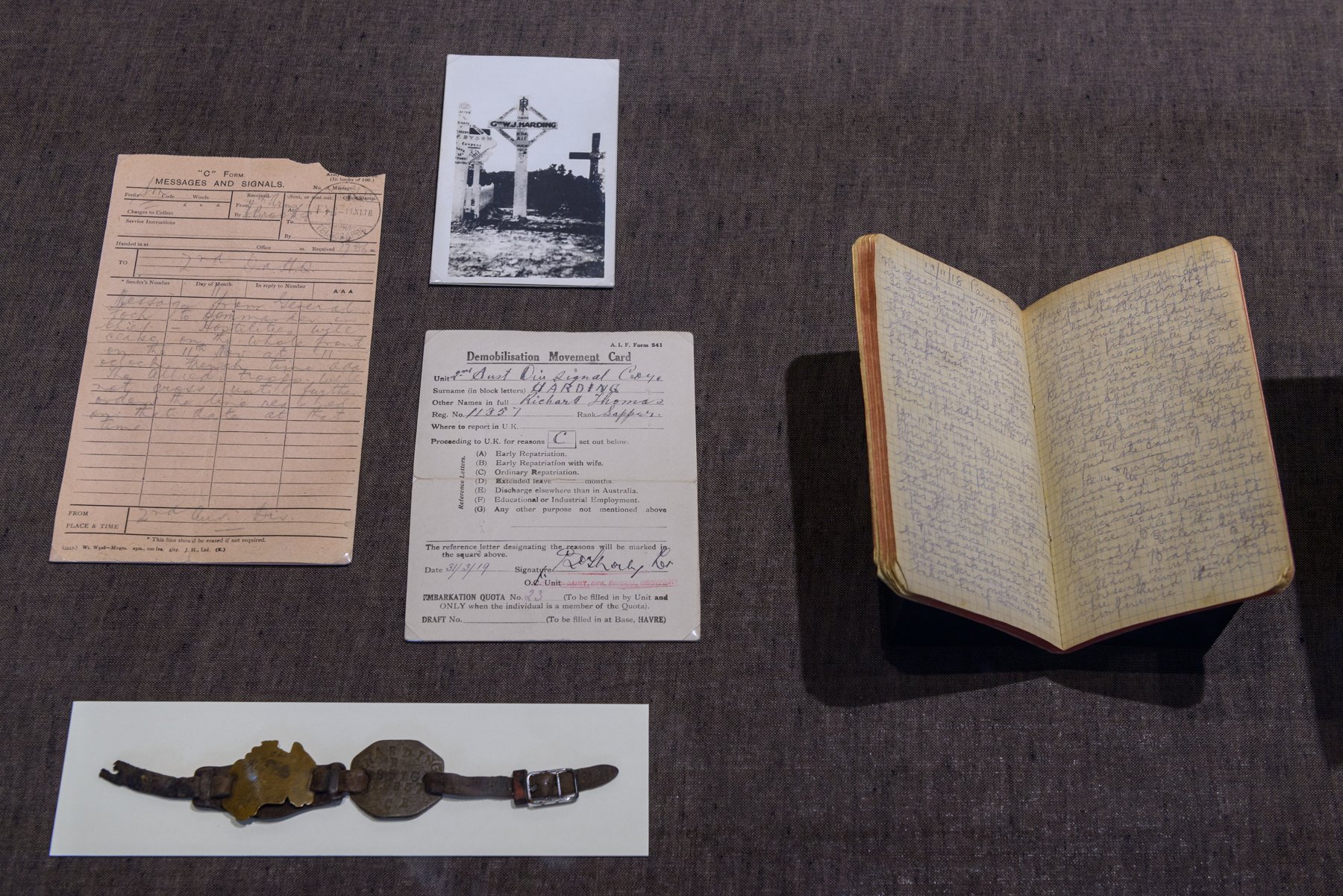News of the World War I armistice reached Australia late in the day on 11 November 1918. Exuberant crowds gathered in the centre of the city to celebrate.
Yet with the announcement, many soldiers felt both joy and disbelief.
Percy George Samson enlisted on 20 March 1916 and served as a private with the 10th Field Ambulance and the 2nd Casualty Clearing Station. Before being repatriated back to Australia on 9 July 1919, Samson captured the announcement of the armistice and the celebrations that followed in his diary.

19 November 1918 diary entry by Percy George Samson
19 November 1918, Paris and Lyon
On 11th. (Thursday) word came through and was later confirmed officially that the armistice had been signed. Could it be possible? The war was ended. I had longed to live to see such a day. The glorious thing above all other things was the thought that Right and Justice had overcome so gloriously Wrong and Brute Force.
No fuss was made by the boys. Everybody went on working as usual. ‘The war is over,’ someone said, but no more notice was taken that if someone said, ‘There is no parade today’. Not that there was not joy in everyone’s heart. The glint in the eye showed that, for what visions rose secretly before us all? But the soldier has become a philosopher and takes all things as such. Our joy is so full that it can merely leak out. Perhaps it was hard to realize that nobody sought another’s life, that the beautiful moonlight did not mean horror and death poured from the sky, that men could now live naturally.
I felt that I wanted to be alone, to thank God; for who will not say that God helped the cause of Right.
On the 14th Nov. Juggo and I left for leave in Paris and have since had a glorious time. Three things are worth mentioning.
We visited Versailles on 15th. It is a beautiful palace, full of French history. I saw the gorgeous room, the Galerie des Glaces in which peace is to be signed. I also saw the buildings in which the representatives of all nations were then in conference. Our photos were taken in front of the balcony from with Louis 16th. had tried to pacify the Paris mob just previous to his execution. The Gallery of Battles showed French history at a glance. Louis 14th. was very manifest all through the palace.
We saw the grand opera ‘Aida’. The music and scenery and singing were beyond description, and the inside of the building was worth the money to see in itself. We occupied one of the boxes, or loges.
Sunday 16th was Fete Day, and will always be a red letter day in my life. Paris celebrated the great victory, and it was a revelation of French character. I went to the Place de la Concorde. The place was packed, one sea of faces, numbering millions. The gendarmes only with difficulty kept the crowd in order for the procession, but when the Alsace-Lorrainers marched passed, the excited crowd could not be kept back. They streamed over everything. The procession could no longer continue. Paris went mad and gave itself up to good-humored [sic] joy. Cannons boomed out, aeroplanes of every type flew over, all the sky was black with pigeons set free to carry the President’s message to all parts of France. It was a strange sight to see aeroplanes and pigeons flying in and out everywhere. The chains, signifying the loss of Alsace and the Strasburg column. After that I was carried here and there and everywhere by the human current. I managed to get on a marble railing on the side of the square to watch the scene, but the excited people actually grabbed hold of my legs to pull themselves up. I was almost pulled off my feet. It was an education to watch that crowd. After four years of perseverance and grim sacrifice, these people had overcome, and their joy was let loose.
I managed, after much difficulty, to get into the Rue Royale and about 4 o’clock the vast stream flowed toward the Opera and the Boulevards homewards. All the way the revelry continued. The young people formed circles and danced round and round, kissed and were kissed. They threw confetti until the boulevards were covered. Flares were fired. Little processions marched gaily up and down with the effigy of the Kaiser on the gallows. In a thousand ways they showed their pleasure. It was an unforgettable day.
Percy George Samson, Diary June 1917 – May 1919, Manuscript, MS 11838

Samson’s diary is currently on display in the Changing face of Victoria exhibition.



A fabulous description of Paris!